One of the best loudspeakers I ever heard was at Sikora’s, a classical music shop in Vancouver that sadly closed two or three years ago. My mum lives in Vancouver, and whenever I’d visit, we’d make the pilgrimage to rifle through their bins of used and new CDs (before I got back into vinyl). We’d always leave with something interesting.
Being a classical music lover today is both a blessing and a curse, particularly in North America. The blessing? Nobody listens to classical anymore, so used albums are dirt cheap. Sub-blessing? Most classical records were well cared for, so they’re typically not only dirt cheap but also in great condition. Curse? With declining popularity, a lot of specialty classical music stores have closed (R.I.P. Sikora’s), and selection is poor at the shops that do sell it. Thank goodness for European and Japanese classical music sellers on Discogs.

But I digress; my topic here is loudspeakers. The last time I visited Sikora’s was about a year after I got into vintage (and just a few months before it closed for good). At this point, I owned pairs of B&W DM1200 bookshelf speakers and Klipsch Quartet floorstanders and had recently purchased a set of KEF Calindas desperately in need of a recap (no treble to speak of; a well-known issue and one I’d factored into my purchase decision, though I would procrastinate the repair multiple times).

The incredible Sikora speakers sat about two meters up, on top of display shelves. They looked like bastardized, custom KEFs, with a racetrack bass driver, Bextrene midrange, and a soft dome tweeter visible on the front baffle. The cabinets were about the same height as my Calinda’s, but wider and deeper. The sound they emitted was exquisite: tight but plentiful bass with a pure, detailed, creamy, uncolored midrange and treble. “That’s the speaker I want,” I thought, if I could ever figure out what it was.
When we got home, I jumped on the Facebook KEF group, posted a picture, and asked if anyone knew what these wonderful loudspeakers were. I soon had my answer: Linn Isobariks. Searched on eBay to see if there were any for sale. There were, but I wouldn’t be buying. Vintage prices on eBay are typically inflated, but the cheapest pair of Isobariks I found were in need of work and the buyer wanted $10,000. Another pair were in perfect condition (no such thing) and priced around $20,000. There were some other pairs priced somewhere in between. All way outside my price range.

So, no Linns, but I had a pair of KEFs at home and if they could be made to sound even half as good as the Isobariks, I’d have some superb speakers on my hands. That night I ordered a new cap set from Falcon Acoustics in the UK (Audiokarma told me this was the place to get new KEF caps) and as soon as they arrived in the mail, in the speakers went for their long-awaited repair.
If you have read my first columns, you’ve by now twigged that I’m not a technical guy. I don’t repair anything myself (unlike the Budget Audiophiler), but have it done by local technical experts. If that’s you, nothing to feel bad about; in fact, you (we) are contributing positively to the local economy. It’s also good to admit when you don’t know something and most likely cheaper to have it done correctly the first time.

A few weeks later the Calindas were back. Knowing that they’re extremely inefficient (only 83 dB @1 watt/1 meter), I hooked them up to my most powerful amp, the NAD 3140, and let fly. They sounded great to my ears. Not Isobarik great, but better than the other speakers I owned. Good enough that they became a permanent fixture in my home. Good enough that I reconsidered the direction I had taken with my audio set-up and made several changes.

As a side note, efficiency refers to a speaker’s ability to play loud with low power input. The Calinda’s sensitivity rating of 83 dB means the speaker produces 83 dB of sound at a distance of 1 meter with 1 watt of input from the amplifier. Some common rules around efficiency are 1) that to increase the sound from the speaker by 3 dB, you need to double the power into the speaker (so to get 86 dB you’d need 2 watts of power in, 89 dB needs 4 watts, and so on), and 2) every 10 dB increase in speaker output equates to double the volume (so 93 dB is twice as loud as 83 dB). John DeVore of DeVore Fidelity has a very interesting rant on YouTube in regard to this topic that makes a lot of sense and sheds some light on the power/sensitivity topic.
Back to the changes. I sold the Klipsch Quartets. I never could get them to sound right. They were on the dry side (verging on harsh), and bass shy. In retrospect, I wish I’d held onto them until I had a tube amp as word is (since confirmed) that Klipsch and tubes are a match made in heaven. You live and learn in this hobby. Thankfully with some touch-up work on the cabinets, I made money on them.

I purchased a pair of ESS PS4As, with the famous Heil AMT (Air Motion Transformer) ribbon tweeter. Nice big cabinets, 10” bass driver, and 10” passive. Solid, tight bass and sweet-as-honey midrange and airy treble. And more importantly, very efficient (96 dB) and not overly dependent on power. At about the same time, I learned about how important speaker placement can be for optimal acoustics and discovered that further from the wall (around 2’) resulted in better sound from all my speakers. Loudspeaker placement and the acoustics of your room have an enormous impact on the overall sound quality of your system.
I picked up a classic tube amp. Vintage Dynaco ST-70. Had it modified (suggestion from my tech) to use different output tubes, resulting in a slightly higher output than the rated 35 watts/channel. The Dynaco made the PS4As purr like a pussycat, adding just a touch of warmth. That combination made me start to wonder about the Klipsch loudspeakers that I had sold.

I parted with the B&W DM1200s. They weren’t doing it for me anymore. There was something missing down low that could have been satisfied with a sub-woofer, but I’m a bit of a two-channel purist and feel like a sub is more for video. I’d rather have a larger cabinet with bigger drivers.
I bought a pair of Klipsch KLF 30s from a friend who took the B&W loudspeakers off my hands along with some cash. I had dreamed of these big-sounding speakers for ages, was thinking tube synergy, and the timing was right as my friend was making changes in his own system. The 102 dB sensitivity rating of the KLF 30s was also very appealing; although I have heard from others that Klipsch can overstate those numbers in their marketing materials. The RP-600M that we just reviewed are not as sensitive as their specs would suggest, according to our Editor-in-Chief, Ian White.
The KLF 30 utilize two 12” bass drivers for spanking bass, and dual horns for precise, clear mids and highs. Both solid-state and tube amplification can make these loudspeakers sing quite beautifully.

Still remembering the Isobariks, I added a NAD 2600 power amp. This was immediately paired with the Calindas, and I finally had the power to drive them to their potential resulting, in my mind, with the “KEFbarik” I had hoped for.

Looking back, my order of arrivals and departures was not optimal, and I do experience occasional moments of doubt and regret. I wish I had heard the Quartets properly driven with my Dynaco, and I wish that I had waited to listen to the B&W DM1200s (almost as inefficient as the KEFs at 85 dB) powered by the NAD power amp.
Even with some mistakes along the way, I’m pretty happy with where I’ve ended up. The KEFs and NAD stay paired upstairs in the living room; the Calindas are on the smaller side and inobtrusive so a good fit. The ESS and Klipsch (both significantly larger and more efficient) live in the dedicated music space in the basement, rotating in and out, and paired with my lower-powered amplifiers.

If I had to do it all again, starting a vintage system with just an amp and speakers, I’d go for efficient speakers (95 dB or higher) paired with a low-powered amp (anything from 20 to 50 watts per channel); this combination will almost always achieve sufficient volume levels and keep things affordable. Fortunately, most vintage speakers were designed to work with the less powerful amps of the times, so this combination should not be hard to put together. Budget about 2/3 for speakers and 1/3 for an amp, and you’ll have a system that brings a huge smile to your face now and provides a solid jumping off point for future upgrades.






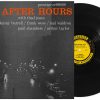
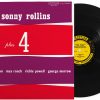
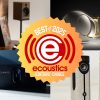







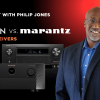

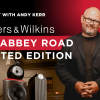



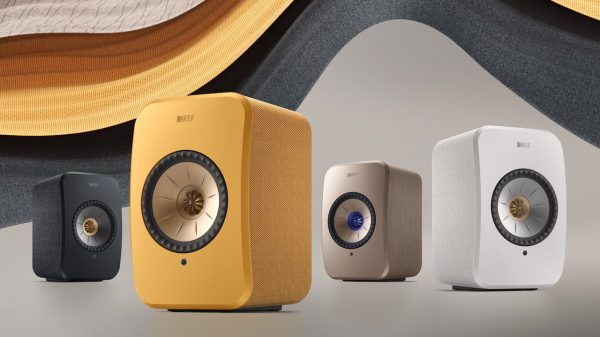
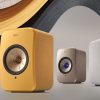



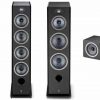

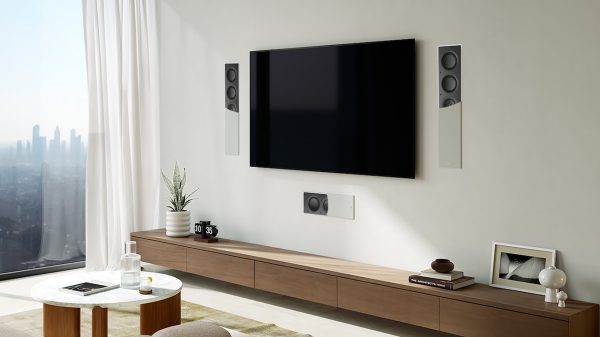
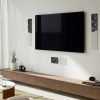
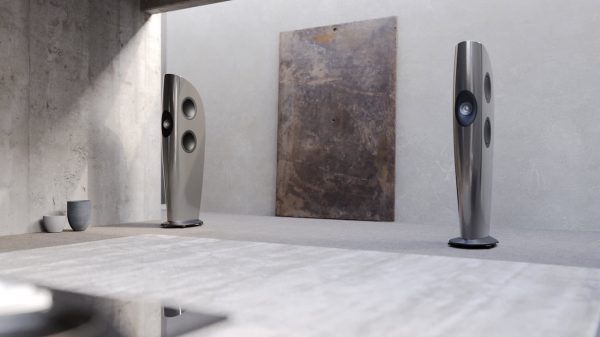
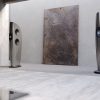











ESS Fan
February 23, 2021 at 3:02 pm
Great story, dig the journey. I once had a pair of Forte but hadn’t yet the money for a proper amp. I powered them (unsatisfyingly) with a Parts Express 50w amp board. It played loudly, but not goodly. I regret not hearing them with the several tube amps I have since bought and sold.
Anyway, just wanted to also set a slight correction. Those aren’t the “famous” Heil AMTs. Yours are the monopole version in the Performance Series line. In fact, ESS lost the patent on this driver and you’ll now find it all over the modern audiophile speaker universe. The “famous” AMT is the large, heavy di-pole (it’s black, and has plastic wings/guides) that sits atop the AMT-series speakers, like the AMT-1A-D, the Monitor, and the AMT-3 “Rock Monitor.”
I’ve had multiple pairs of PS and AMT line speakers from ESS. Your PS4 are the best of the PS lineup, with the best mids in the bunch. But you haven’t heard the ESS sound until you hear the AMTs.
Happy hunting! 🙂
Eric Pye
February 23, 2021 at 7:39 pm
Thanks for reading, and for the comment. Yes, I suppose “Heil” is famous, and the dipole is “more famous?” Either way, I love the baby Heil and the PS4A, and will one day hopefully get to experience the big-boy Heil.
Keith
August 17, 2021 at 4:32 pm
I’m assuming your suggesting the AMT ESS speakers ? I have a pair.
Ps. Love your articles. Great reads.
Cheers
KL
Mark Lawless
January 11, 2025 at 5:03 am
I have the DM12’s and had I been you I would have matched them with a decent subwoofer. Done right or even close to right a sub works great for stereo sound. It would go even deeper than your new larger speakers. It can be hard to get two speakers placed well to give you good bass at all frequencies. Using the smaller speakers you can get great sound, especially with a sub that you can place to optimize the bass in the room. I even use a Sub with my B&W801D4s
Brendan
July 24, 2021 at 8:33 pm
Nicely written article about your audio bildungsroman! I am on a bit of a Klipsch and ESS journey myself, with Heresy and AMT-4 speakers being switched in and out. I have very high powered amps (the ESS 500w and an Onkyo TX-6500 mkii, at 250wpc and 100wpc respectively), but I need to get into the tube aspect soon to see how that affects things. Funnily, my AMT-4s came with paperwork warning against use of the ESS power amp.
Eric Pye
July 24, 2021 at 11:44 pm
Certainly for Klipsch the prevailing wisdom is that they’re heaven with tubes. Great match for the horns. My experience with the PS4As is similar; their high efficiency means big power isn’t necessary and the single-dipole baby Heil and tubes play nice together. Not sure of AMT-4 efficiency or how synergy would be with the big Heil, but if they’re similar then tubes are worth trying.
TonyE
April 30, 2023 at 6:42 am
It’s still “vintage”… and it just doesn’t sound that good.
Look, in my closet I got -fully rebuilt to OEM specs, no LEDs thank you- a Marantz 2325, Sansui G7500, Kenwood KA3500/KT5300, Akai 980, Marantz 4415 (with remote, SQA1 an CD400)… plus an Akai 4channel reel to reel.
For vintage speakers I got a pair of recently rebuilt ADS L810s, plus two pairs of 4 channel headphones.
That’s the vintage… I also got a bunch of stuff from the 90s (forget the 80s).
But my modern stuff, my DIY Pass Alephs and First Watt, and the tube amp/preamps and speakers simply BLOW away the vintage stuff.
Sure, my Linn LP12 dates from the early 90s, but it’s actually modern.. it just got the new Karousel…
So, that vintage stuff.. yawn… sorry.
Besides, I paid less than 200 bucks for a Marantz 2220B in ’75… and clowns are being suckered for 800 bucks… with the LED lights “upgrade”.
If you want good sound, you have to look at stuff made after ’99. Ignore most of the ’82 to ’99… and realize that much of the mid 70s stuff looks great but just won’t play great… with the very rare exceptions of a very few High End electronics -mostly tubes.
Sorry.
Ian White
April 30, 2023 at 12:53 pm
Tony,
Eric has a really nice pair of Energy and ADS loudspeakers as well if you check out his IG feed. I was never a Klipsch fan.
His system sounds really impressive. The McIntosh one with the Thorens table.
I’m more into the 1990s stuff myself (Apogee, Vandersteen, Magnepan, MartinLogan), but you would be surprised how good Eric’s main system sounds.
Best,
Ian White
tonyE
April 30, 2023 at 6:41 pm
You can get a vintage system to sound good…
My Sansui G7500 with the ADS L810s also sounds really good… but it lacks the imaging and soundstaging of more modern speakers. That particular receiver was a PITA to rebuild since the high speed transistors are no longer made… it took four months to find the OEM replacements. And the setup sounds good because the front end is modern.
The big Marantz iron sound powerful, yes, but dark.
Marantz, IMHO, sounds like Led Zeppelin on a dark, rainy autumn afternoon…. the high speed Sansuis sound like Steely Dan on a sunny Saturday spring morning.
Those Thorens tables are good, but my Linn/Karousel/Trampolin/Lingo/Ittok LV II/Grado Master 2 simply stomps all over it.
When it comes to the source, short of an open reel, modern turntables ( not entry level ) have far lower noise, rumble, etc…
I also have Maggies… but the current ones with the better tweeters are much better, cleaner sounding. Perhaps the bass panels from the Timpani… suitably rebuilt, but the 1.7 are eons better than the III.
I stand by my observations… the vintage stuff, even when carefully rebuilt to OEM specs, are simply not to current High End standards -with very, few, few exceptions: open reels, some tubes, etc.. The vintage sound can sound good, but it lacks the imaging, resolution, micro dynamics of current stuff… even “cheap” stuff like the Elac Unifi2 RB52…
BTW, in your vintage set up, move the speakers away from the walls, it makes a huge difference.
Ian White
April 30, 2023 at 8:42 pm
Tony,
I agree that modern systems sound better but I’m ok with mixing/matching components from different eras. I have 3 Thorens tables (TD-145, TD-160 Super, TD-125 MKII), but I totally agree that my Michell Orbe SE (no longer with us) was vastly superior. I also have a NAD C 588 and Yamaha YP-701.
A Michell Gyrodec SE with the Michell tonearm is my endgame table.
A pair of Magnepan LRS are in my den on custom stands. Can’t do better for $650.
I plan on having the Vandersteen and MartinLogan reQuests 3-5 feet from the walls.
Best,
Ian White
ralf
October 26, 2025 at 1:26 pm
I tend to use NAD equipment as basis, and couple them to British speakers. Had dozens of them. Usually a good match. I ended up selling my NAD 2400 power amp, kept my NAD 117 pre-amp, and mated it to a D class amp, the DOUK H7 pro. The result is even better than with the NAD 2400.
ralf
October 26, 2025 at 1:27 pm
Oh, and I use Kef Calindas like you do. They sound a bit like B&W DM2a. But the Kefs can be positioned closer to the backwall.